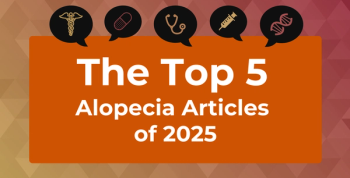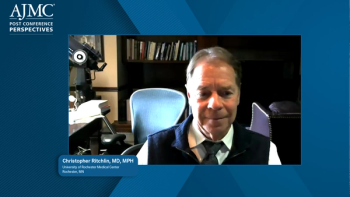
Vitiligo, Mental Health Tied to Higher Health Care Utilization and Costs
Patients with vitiligo and psychosocial comorbidities face significantly higher overall health care utilization and costs, although their vitiligo-related expenditures remain similar to those without such comorbidities.
Patients with
In the US, vitiligo prevalence ranges from 0.1% to 1.5%. Based on 2022 population estimates, vitiligo affects up to 5 million people in the US. Patients with vitiligo often experience significant quality-of-life impairment in employment, routine activities, and psychosocial health; those with vitiligo are about 5 times more likely to have depression than healthy individuals.
Past research
To do so, they identified patients in the IBM MarketScanCommercial and Medicare supplemental claims databases with an International Classification of Diseases, 10th Revision (ICD-10) diagnosis code for vitiligo from January 1 through December 31, 2018. Eligible patients were 12 years or older with a medical claim for vitiligo in 2018 and 12 continuous months of postindex health care plan enrollment.
During the postindex period, the researchers identified comorbidities and prescription data for each patient using codes from the ICD-10 and the National Drug Code, respectively. Overall, the demographics, expenditures, and health care resource utilization data collected were individually aggregated and summarized per patient per year (PPPY; defined as the average of total costs in 1 year per patient; expenditures were in 2018 US dollars).
Initially, the researchers identified 18,309 eligible patients, but only 12,427 patients had 12 or more months of continuous postindex coverage. The patients' mean (SD) age was 43.7 (16.9) years, and most (53.2%) were female. Nearly one-fourth (23.5%) of the study population had a diagnosis of 1 or more psychosocial condition, the most common being depression (30.8%), adjustment disorder (20.3%), anxiety (20.3%), and sleep disorder (18.4%).
The most prescribed vitiligo-related therapies were topical calcineurin inhibitors (TCI; 21.1%), oral corticosteroids (OCS; 18.7%), and medium-potency topical corticosteroids (TCS; 9.8%). During the postindex period, a greater percentage of those diagnosed with 1 or more psychosocial comorbidities had vitiligo-related prescription claims (50.2% vs 45.4%; P < .0001), especially for OCS (25.4% vs 16.6% P < .0001), TCI (19.3% vs 21.7%; P < .01), and low-potency TCS (9.0% vs 7.6%; P < .05).
Conversely, total mean PPPY vitiligo-related pharmacy costs were similar among those with vs without 1 or more psychosocial comorbidities ($238 [$1592] vs $217 [$1205]; P = 0.52). Additionally, both groups had similar rates of vitiligo-related inpatient stays (0.6 vs 0.3%; P = .07), outpatient visits (93.6% vs 94.1%; P = .33), and emergency department (ED) visits (0.4% vs 0.2%; P = .10).
The health care resource utilization and costs were consistent in both groups for vitiligo-related inpatient stays and outpatient visits. However, the researchers found significant differences among the health care resource utilization (0.01 vs 0.00; P < .05) and mean PPPY health care expenditures ($22 [$535] vs $3 [$67]; P < .05) for the vitiligo-related ED visits of patients with vs without 1 or more psychosocial comorbidity. Despite this, the total annual vitiligo-related expenditure was similar for the 2 groups (mean PPPY, $1187 [$5012] vs $1112 [$4228]; P = .47).
Overall, patients with vs without 1 or more psychosocial comorbidities had significantly greater (P < .0001) utilization of all-cause mean prescription claims (25.0 vs 12.8), outpatient services (other than physician and ED visits: 19.5 vs 11.3), outpatient physician visits (10.1 vs 6.4), inpatient stays (0.6 vs 0.1), and ED visits (0.4 vs 0.2) during follow-up. The mean cost of all-cause and vitiligo-related health care PPPY for all patients with vitiligo was $11,943 ($34,248) and $1130 ($4425), respectively.
However, the mean all-cause PPPY total health care expenditures ($18,804 [$46,621] vs $9833 [$29,094]) and costs related to outpatient services ($8942 [$31,580] vs $4518 [$18,310]), prescriptions ($4229 [$14,760] vs $2872 [$14,399]), inpatient services ($3289 [$21,211] vs $1185 [$10,821]), outpatient physician visits ($1274 [$1149] vs $782 [$729]), and ED visits ($1069 [$3799] vs $476 [$2440]) were significantly higher among patients with vs without 1 or more psychosocial comorbidity (P < .0001).
The researchers acknowledged their limitations, including using retrospective, administrative claims to conduct their analysis. Consequently, there is potential for incomplete records, sampling bias, improper data entry, and differences in actual vs physician-directed medication use. Despite their limitations, they expressed confidence in their findings.
“These findings emphasize the need to identify psychosocial comorbidities among individuals with vitiligo and reduce the associated burden through multidisciplinary management of their vitiligo, including ensuring effective management of mental and behavioral health comorbidities,” the authors concluded.
References
1. Lofland JH, Darbha S, Naim AB, Rosmarin D. Healthcare resource use and costs among individuals with vitiligo and psychosocial comorbidities: retrospective analysis of an insured US population. Clinicoecon Outcomes Res. 2024;16:557-565. doi:10.2147/CEOR.S463987
2. Patel KR, Singam V, Rastogi S, Lee HH, Silverberg NB, Silverberg JI. Association of vitiligo with hospitalization for mental health disorders in US adults. J Eur Acad Dermatol Venereol. 2019;33(1):191-197. doi:10.1111/jdv.15255
Newsletter
Stay ahead of policy, cost, and value—subscribe to AJMC for expert insights at the intersection of clinical care and health economics.








































